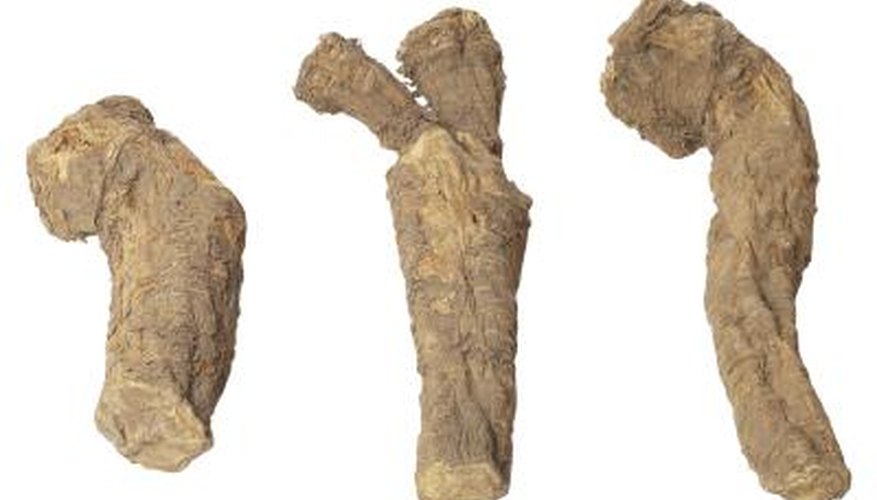A perennial bush, cassava is also known as yuca, tapioca, and manioc. The plant requires very little care after planting. Cassava grows from stem cuttings or stalks that develop bulbous, starchy roots underground. These roots are an ingredient for soups, stews, doughs, and alcoholic beverages in countries around the world. Cassava requires a long growing season, making it suitable for planting only within U.S. Department of Agriculture (USDA) planting zones 8 through 11.
Till the soil to a 12-inch depth, and check the pH using a soil test kit. Cassava is not fussy about its soil, but it does prefer the soil to have a pH between 4.0 and 8.0. To raise a pH below 4.0, add lime. To lower a pH above 8.0, add peat. Apply the lime or peat according to manufacturer's recommendations.
- A perennial bush, cassava is also known as yuca, tapioca, and manioc.
- Cassava is not fussy about its soil, but it does prefer the soil to have a pH between 4.0 and 8.0.
Plant cassava as soon as the threat of frost is over. Lay the stalks along the broken soil line, spaced 3 feet apart. Cover the stalks with 1 inch of soil. Water the stalks immediately. Keep the soil evenly moist during the growing season with a combination of rainfall and supplemental watering with a garden hose.
Fertilise the soil around the cassava stalks two months after planting. Apply a 46-0-0 fertiliser according to manufacturer's specifications. Keep the fertiliser at least 6 inches from the stalks to prevent burn.
- Plant cassava as soon as the threat of frost is over.
- Keep the fertiliser at least 6 inches from the stalks to prevent burn.
Pull weeds that grow around the cassava as soon as they develop, or they will compete with the cassava for water. If you prefer, spread 3 inches of mulch around the stalks to suffocate weeds and impede their growth.
Harvest cassava roots approximately eight months after planting the stalks. Cut the stems with a pair of loppers. Pull the roots out of the soil by hand with the help of a metal pry bar.
TIP
The eight-month harvest time for cassava is an average. Before harvesting, it is a good idea to brush away some of the soil and take a look at the root. A swollen root, 6 to 12 inches in length and 2 to 3 inches in diameter, is ready for harvest.
WARNING
Harvested cassava tubers quickly dehydrate within days. Storing them in plastic bags will extend their shelf life to three or four weeks. Cassava is poisonous in its raw state and requires cooking before eating.
